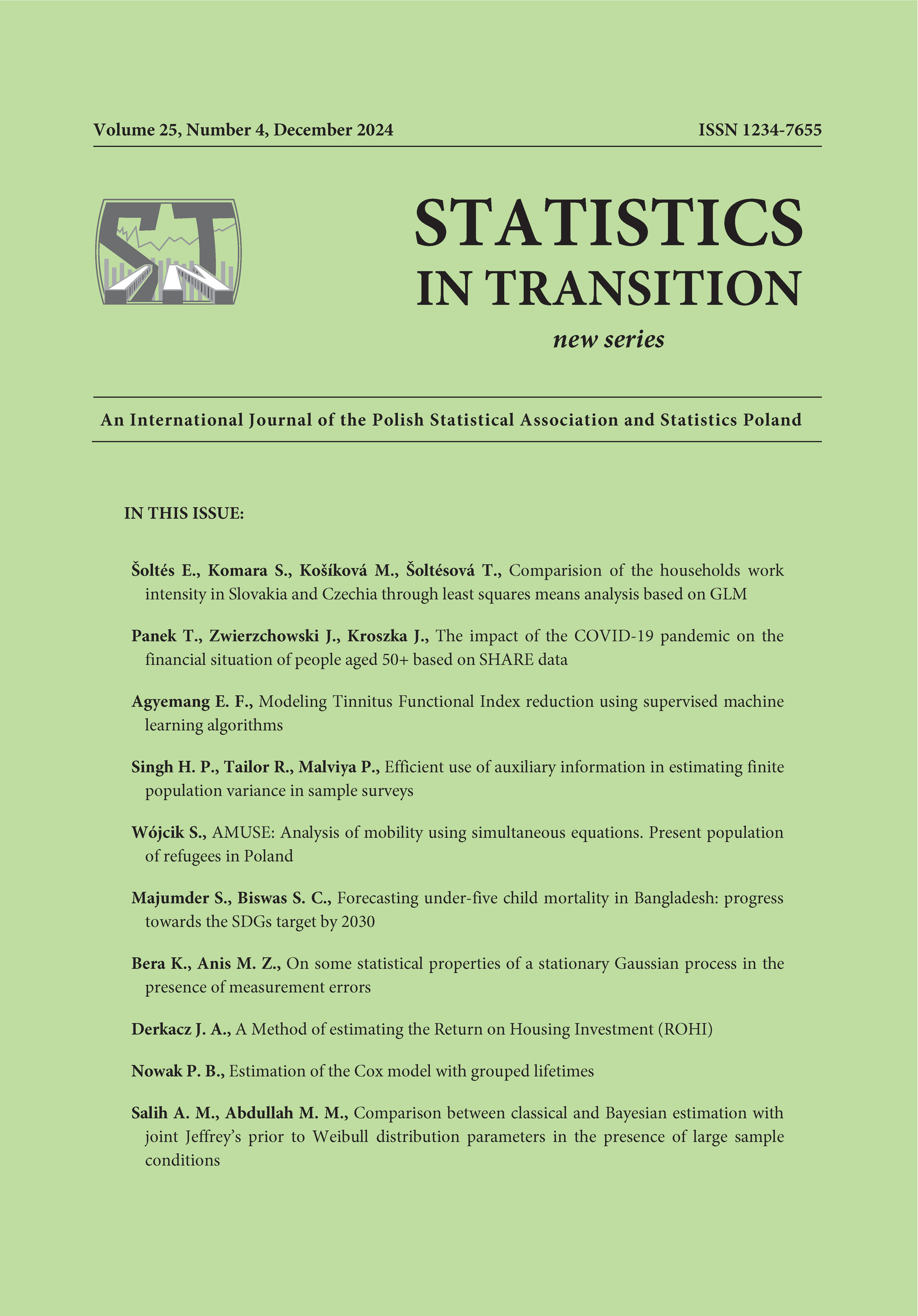Comparison of household work intensity in Slovakia and Czechia through least squares means analysis based on GLM
Comparison of household work intensity in Slovakia and Czechia through least squares means analysis based on GLM
Author(s): Erik Šoltés, Silvia Komara, Martina Košíková, Tatiana ŠoltésováSubject(s): Economy
Published by: Główny Urząd Statystyczny
Keywords: work intensity; (quasi-)joblessness; general linear model; marginal means; contrast analysis;
Summary/Abstract: The work intensity (WI) of a household is primarily monitored in order to identify (quasi-)jobless (QJ) households. QJ households are those households whose members use less than 20% of their work potential. Individuals in such households, together with income-poor and severely materially and socially deprived persons are included in the Europe 2030 Strategy as socially excluded who need to be targeted by social policies. The aim of the paper is to assess the impact of relevant factors and their interactions on the WI of households in Slovakia and Czechia. For this purpose, general linear models, contrast analysis and estimates of marginal means are employed. The presented analyses are based on the EU-SILC 2021 survey and carried out separately for Slovakia and Czechia. The paper reveals the common and different features of these countries in terms of the WI of households. Particular attention is devoted to the identification of the profiles of persons at high risk of living in QJ households.
Journal: Statistics in Transition. New Series
- Issue Year: 25/2024
- Issue No: 4
- Page Range: 1-26
- Page Count: 26
- Language: English

